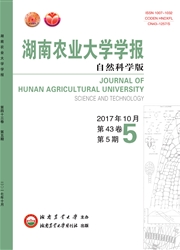

 中文摘要:
中文摘要:
对长沙地区160份南瓜疑似病毒病样品进行小西葫芦黄花叶病毒(Zucchini yellow mosaicvirus,ZYMV)检测,检出率达46.9%。为进一步明确长沙地区ZYMV分离物的分类地位和分子进化特征,克隆获得了1个长沙地区ZYMV外壳蛋白基因,与GenBank已报道的ZYMV外壳蛋白基因比对,并进行基因重组、系统发生、遗传差异、选择压力、种群结构和基因漂流分析。结果显示:长沙地区ZYMV外壳蛋白基因没有发生明显的重组,突变与负选择作用是其进化的主要驱动力,种群结构相对稳定,但正处于扩张的趋势中;ZYMV不同分离物外壳蛋白基因形成3个有明显地理相关性的美洲、欧洲和亚洲种群,美洲和欧洲种群与亚洲种群之间基因交流不频繁,可能受到遗传漂变的影响,而欧洲种群与亚洲种群之间基因交流较频繁。
 英文摘要:
英文摘要:
Zucchini yellow mosaic virus (ZYMV) was detected in 160 suspected pumpkin virus samples in Changsha area, and the detection rate was 46.9%. To further clarify the classification and molecular evolution of ZYMV Changsha isolates, the coat protein gene was cloned and compared with the ZYMV coat protein gene reported in GenBank. And these sequences were analyzed for genetic recombination, phylogenetic, genetic differences, selection pressure, population structure and gene drift analysis. The results showed that no significant recombination of ZYMV coat protein gene was found. Mutation and negative selection are the main driving forces of its evolution, the population structure is relatively stable but is in the trend of expansion. The different isolates of ZYMV coat protein gene form 3 geographically relevant populations: America population, Europe population and Asia population. There is no frequent gene exchange between America and Europe and Asia, and each group may be affected by genetic drift, and gene exchange between Europe and Asia is more frequent.
 同期刊论文项目
同期刊论文项目
 同项目期刊论文
同项目期刊论文
 期刊信息
期刊信息
